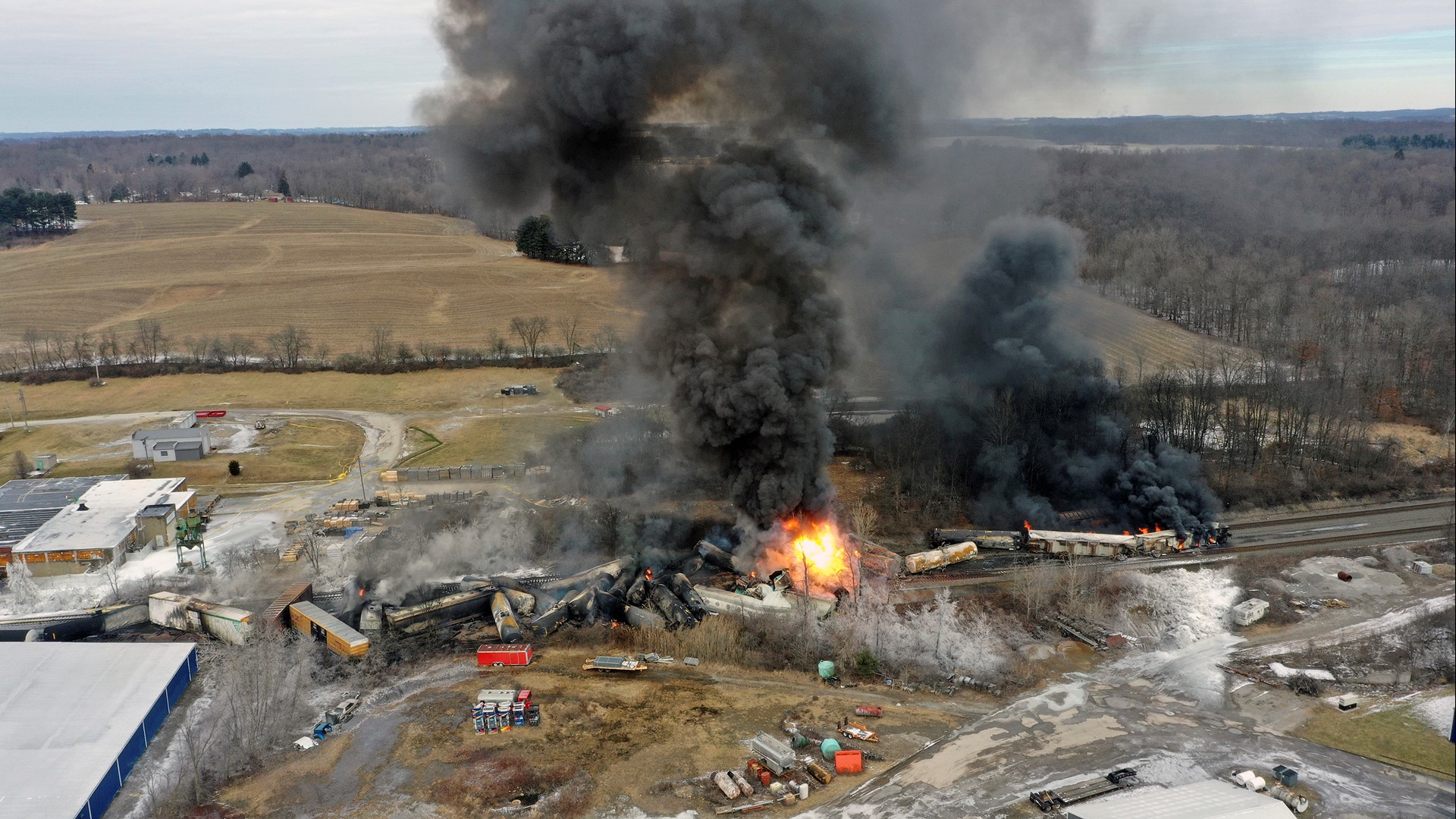Building Contamination Following Ohio Train Derailment: A Detailed Look

Table of Contents
1. Pathways of Building Contamination:
The derailment released a cocktail of toxic chemicals, creating multiple pathways for building contamination. Understanding these pathways is crucial for effective remediation and protecting public health.
1.1 Airborne Contamination: Volatile organic compounds (VOCs) like vinyl chloride and butyl acrylate, known carcinogens, were released into the atmosphere. These substances could have easily infiltrated buildings through various routes.
- Ventilation systems: HVAC systems can draw contaminated air directly into buildings, distributing toxic substances throughout.
- Open windows and doors: Homes and businesses near the derailment site may have experienced direct entry of contaminated air.
- Porous building materials: Materials like wood and brick can absorb VOCs, leading to long-term indoor air pollution and potential health risks. The long-term effects of inhaling these substances include respiratory problems, neurological damage, and increased cancer risk. Effective air filtration systems, if in place, may have mitigated some exposure, but their effectiveness varies considerably.
1.2 Surface Contamination: Hazardous materials could have settled onto building surfaces, both exterior and interior, via direct deposition from the air or through contaminated water runoff.
- Exterior surfaces: Siding, roofing, and other exterior surfaces may have been coated with a layer of contaminants, requiring specialized cleaning or even replacement.
- Interior surfaces: Dust and debris containing hazardous substances could have settled on floors, walls, and furniture, necessitating thorough cleaning or remediation.
- Identifying and remediating surface contamination presents significant challenges, requiring specialized testing and cleaning protocols to ensure complete removal of hazardous materials.
1.3 Groundwater Contamination: The released chemicals could have leached into the groundwater, posing a significant risk to building water supplies.
- Proximity to the derailment site: Buildings located near the derailment are at higher risk of groundwater contamination.
- Water testing: Comprehensive water quality testing is essential to determine the extent of contamination and ensure the safety of drinking water.
- Long-term health consequences: Consuming contaminated water can lead to a range of adverse health effects, depending on the type and concentration of contaminants.
2. Assessing and Mitigating Building Contamination:
Addressing building contamination requires a multi-pronged approach encompassing testing, remediation, and protective measures.
2.1 Testing and Monitoring: Comprehensive testing is the cornerstone of effective remediation. This involves various procedures:
- Air quality testing: Measures the concentration of VOCs and other airborne contaminants.
- Water quality testing: Analyzes water samples for the presence of hazardous substances.
- Surface sampling: Identifies the presence and extent of contamination on various surfaces. The EPA and state/local agencies are responsible for guiding testing protocols and interpreting results. Accurate interpretation is crucial for determining the appropriate remediation strategy.
2.2 Remediation Strategies: Remediation methods depend on the type and extent of contamination.
- Cleaning and decontamination: Involves thorough cleaning of contaminated surfaces using specialized techniques and equipment.
- Demolition and rebuilding: May be necessary in cases of severe contamination where cleaning is impractical.
- Disposal of contaminated materials: Proper disposal of contaminated materials is crucial to prevent further environmental damage.
- Regulatory compliance: Remediation efforts must adhere to all relevant environmental regulations.
2.3 Health Implications and Protective Measures: Exposure to the released contaminants can have significant health consequences:
- Symptoms of exposure: May include respiratory problems, skin irritation, headaches, and nausea.
- Safety precautions: Residents should follow guidance from health officials regarding air quality and water safety.
- Resources for affected individuals: Individuals experiencing health problems should seek medical attention and utilize available support resources.
3. Legal and Regulatory Aspects of Building Contamination:
The legal and regulatory landscape surrounding building contamination is complex and evolving.
3.1 Liability and Compensation: Determining liability and providing compensation to affected property owners is a significant challenge.
- Potential legal actions: Property owners may pursue legal action against responsible parties.
- Insurance coverage: Insurance policies may or may not cover losses related to environmental contamination.
- Government assistance programs: Government agencies may provide financial assistance or other support to affected individuals and communities.
3.2 Environmental Regulations: Numerous environmental regulations govern the cleanup and remediation of contaminated sites.
- EPA guidelines: The Environmental Protection Agency sets national standards and guidelines.
- State and local regulations: State and local governments may have additional regulations.
- Reporting requirements: Strict reporting requirements apply to all aspects of the cleanup process.
Conclusion:
The Ohio train derailment highlights the significant risks of building contamination following industrial accidents. Understanding the pathways of contamination, employing comprehensive testing and remediation strategies, and adhering to relevant legal and regulatory frameworks are essential for protecting public health and mitigating long-term environmental damage. Stay informed about the ongoing situation, consult professionals if you suspect building contamination, and advocate for stronger environmental regulations to prevent future disasters and ensure responsible handling of hazardous materials. For further information and resources, refer to the EPA website and your local health department.

Featured Posts
-
 Ufc 314 Pimbletts Challenger And His Road To The Championship
May 15, 2025
Ufc 314 Pimbletts Challenger And His Road To The Championship
May 15, 2025 -
 Sensex Soars Top Bse Stocks Gaining Over 10
May 15, 2025
Sensex Soars Top Bse Stocks Gaining Over 10
May 15, 2025 -
 Proyek Tembok Laut Raksasa Peran Ahy Dan Potensi Investasi China
May 15, 2025
Proyek Tembok Laut Raksasa Peran Ahy Dan Potensi Investasi China
May 15, 2025 -
 Analyzing The Support System Ha Seong Kim Blake Snell And Korean Baseball
May 15, 2025
Analyzing The Support System Ha Seong Kim Blake Snell And Korean Baseball
May 15, 2025 -
 Will Jacob Wilson And Max Muncy Reunite For The 2025 Opening Day
May 15, 2025
Will Jacob Wilson And Max Muncy Reunite For The 2025 Opening Day
May 15, 2025
